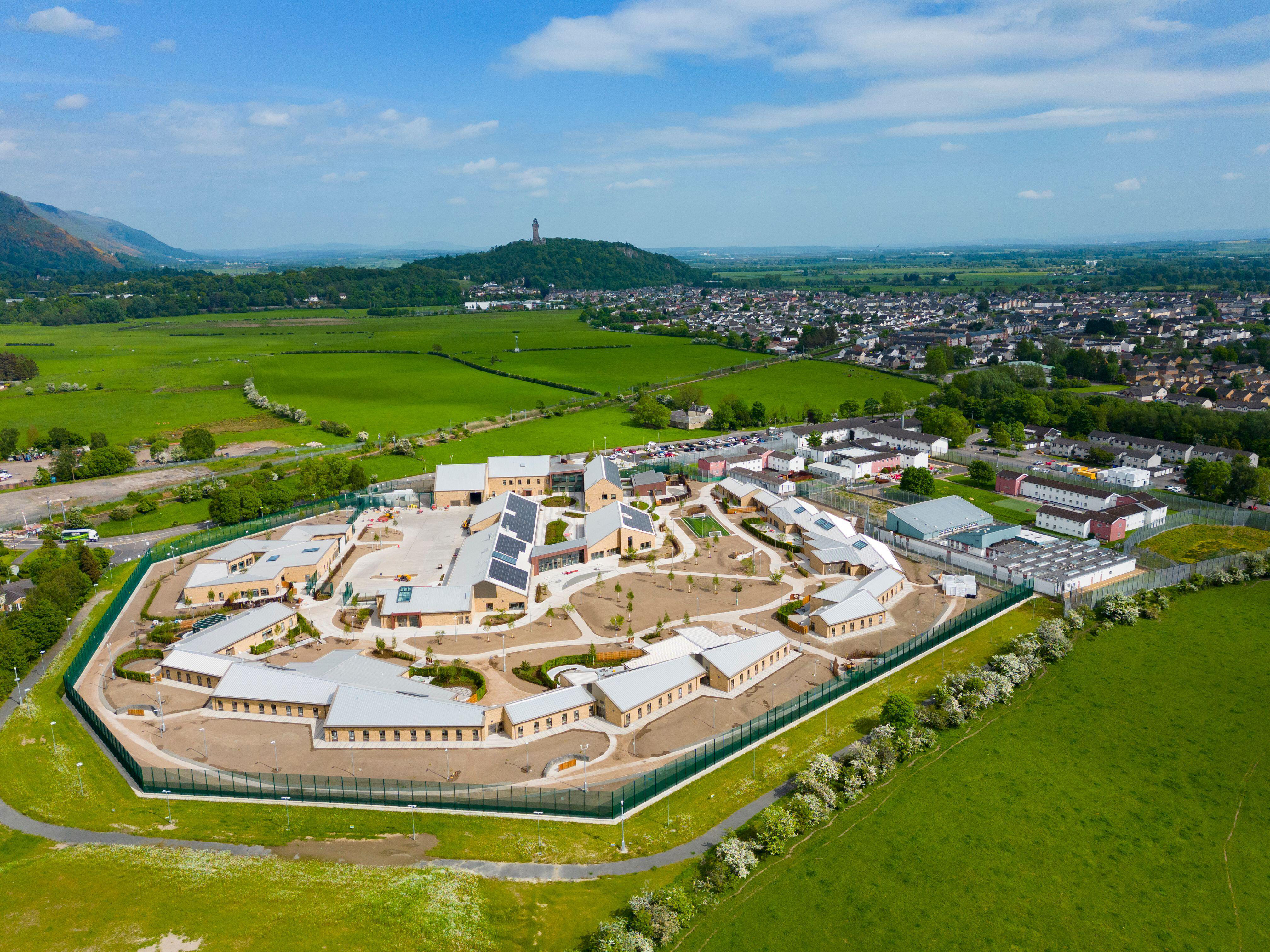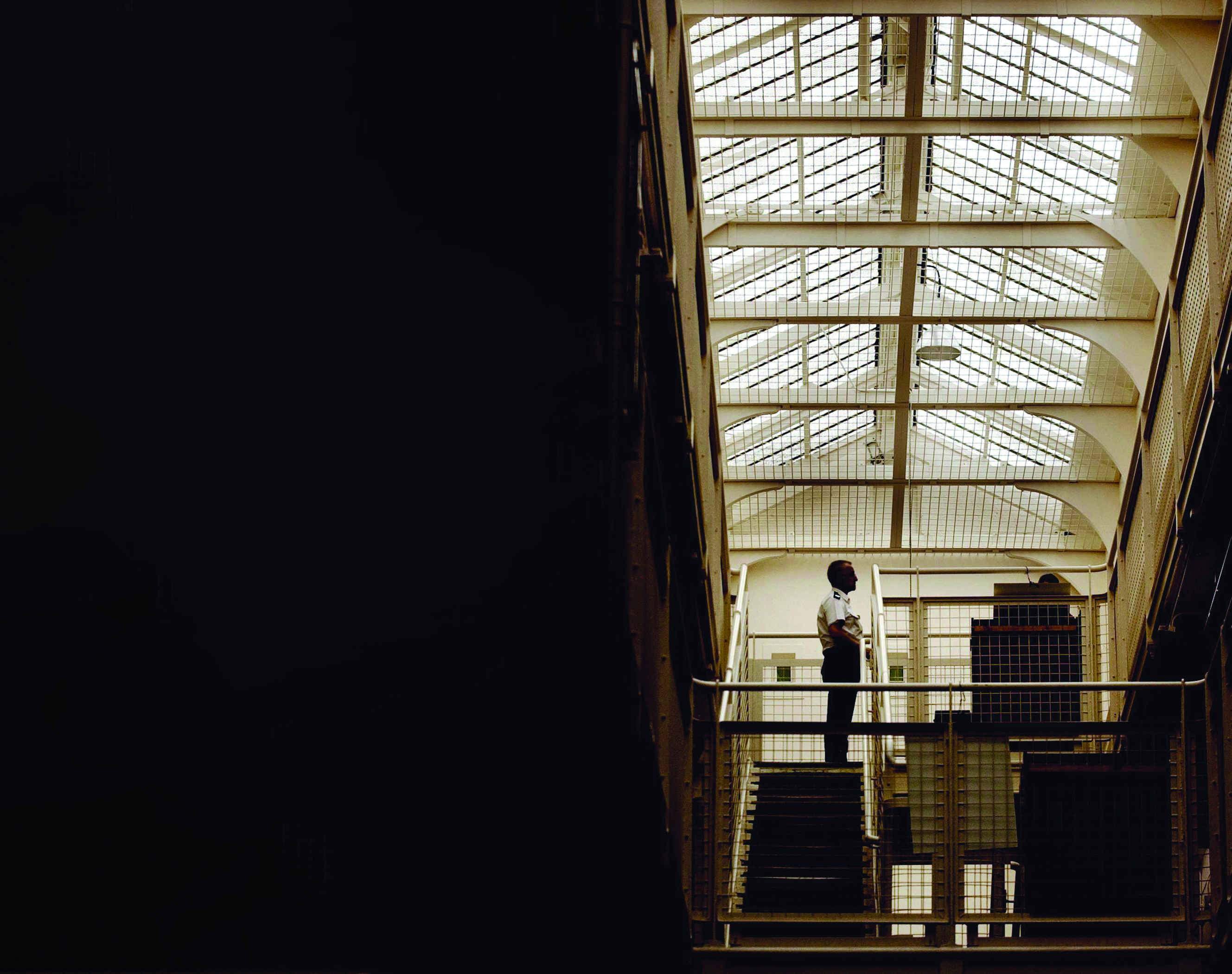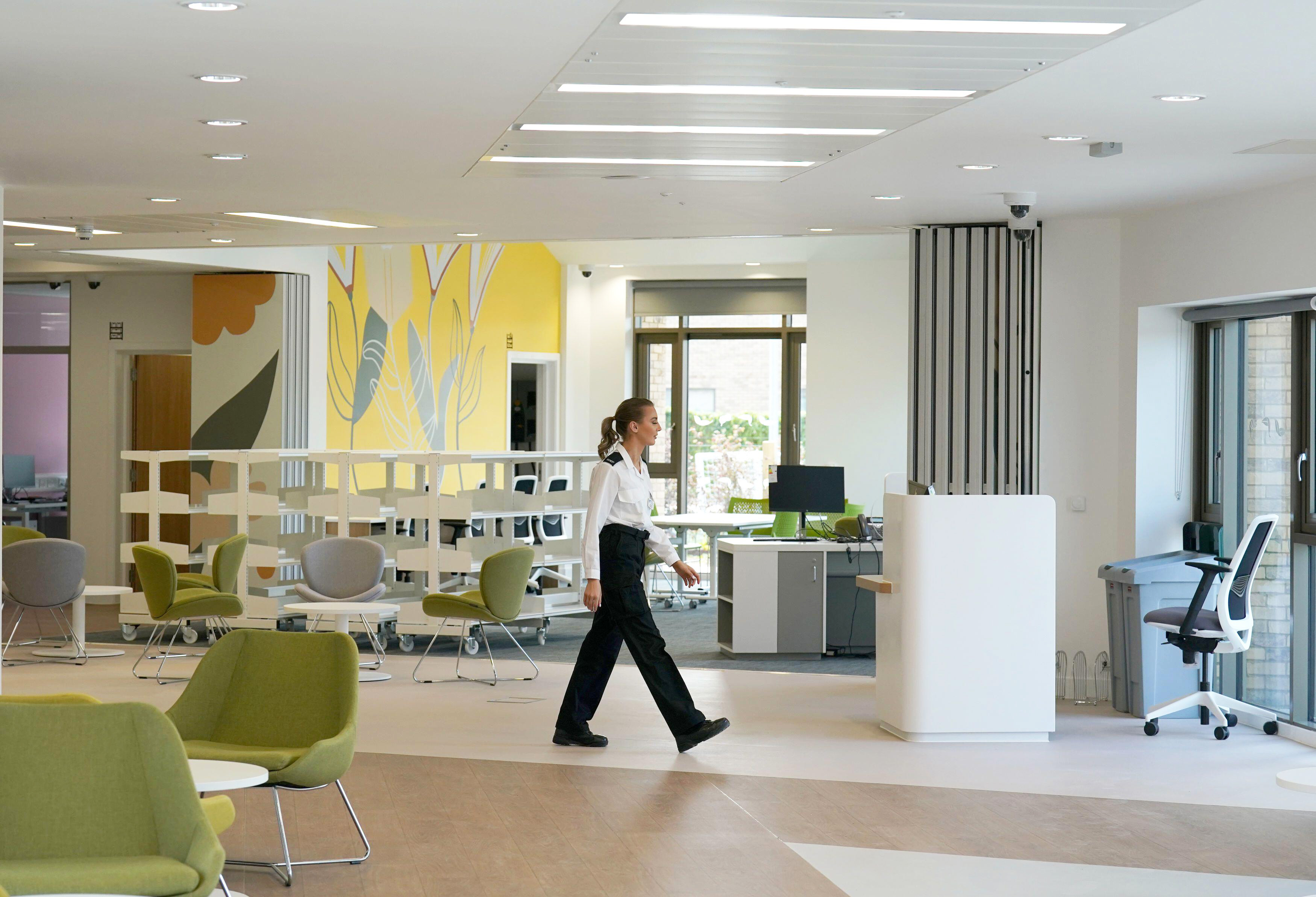Crowded house: Are Scotland's overcrowded prisons fit for purpose?
They don’t make prisons like they used to. Back when the Victorians were building their monuments to incarceration the focus was very much on punishment, the idea being that cramped cells and limited recreational facilities would deter people from reoffending. That is not, says architect Callum Houston, how things are done these days.
Houston is managing partner of Glasgow practice Holmes Miller, which designed both HMP & YOI Stirling – the new women’s prison that replaced Cornton Vale – and HMP Glasgow – the facility that is due to open in 2026 as a replacement for Barlinnie. Prisons these days are “far more modern”, he says, with the focus being on rehabilitation rather than retribution, community integration rather than criminal incarceration.
“If you look at the images of Stirling some people might class it as a five-star hotel,” he says, “but the design is trying to recognise that if you create the right environment, it will help prevent recidivism. We were thinking a lot about mental health and with [the replacement for] Cornton Vale it’s almost like a mental health care facility rather than a traditional prison. At HMP Glasgow we have to meet the challenges of planning in that it’s still a prison so we can’t increase the size of the windows to make it look more classy, but we do have to be community-facing. The front-of-house buildings will be interacting with the local population, and it will be trying to be a good neighbour.”
The low-level buildings, open spaces and landscaped gardens used in the Stirling design will be replicated when work finally gets underway on HMP Glasgow, which will be built on a 54-acre site at the former Provan Gas Works on the main drag into the city. The local community will be encouraged to use a café and other public spaces that are due to be built at the front of the facility while inmates will grow edible flowers to sell to high-end restaurants and integrate with the public as part of classes where places will be offered to the non-prison population.
 HMP & YOI Stirling
HMP & YOI Stirling
The plan is, says Barlinnie governor Michael Stoney, to encourage rehabilitation by making inmates feel “normal”, like they’re part of a society they can make a positive contribution to.
“The new prison is being built with a broader health focus,” Stoney says when I visit Barlinnie on a blustery autumn morning, making my way through a small group of female visitors smoking outside, past security and up to his spartan office. “It will be like 60 small prisons within a bigger one. They will be units of 22 people at most with the same group of staff and everyone will go outside and exercise with the same people they live with. We’re trying to create a sense of community. Here things are very regimented – doors are opened, and everybody goes down to the exercise yard. [At HMP Glasgow] they’ll be able to go in and out when they want to, they will be masters of their own destiny and freedom.”
Much of the focus will be on doing activities with the inmates, basically teaching people who have lived highly chaotic, disordered lives how to live. The design is vital to this as it will vastly increase the amount of time staff have to spend with prisoners, with everything from in-room showers and phones to unlocked internal doors expected to have a positive impact.
“It’s about freeing up time to build relationships,” Stoney says. “All these guys who have never had [secure] relationships, when they click with a prison officer it makes a big difference. By freeing up time, going from around 2,000 to 120,000 hours of contact time a year, it will be very positive. I think that’s what makes the difference, it doesn’t matter about the fancy facilities.”
It is a world away from what is on offer now. In its report for 2022-23, HM Inspectorate of Prisons for Scotland highlighted that the buildings, accommodation, and facilities at Barlinnie are not fit for purpose, something it called an “ongoing area of serious concern”. There are obvious problems in trying to run a modern, rehabilitative prison from a series of creaking Victorian structures: it takes an hour and a half to serve lunch to prisoners who must be brought from their cells in waves, reducing the amount of time for activities in the afternoon; with eight showers and 90 people per floor, inmates are only given the opportunity to wash every second day. But the biggest issue Barlinnie is facing is overcrowding.
According to non-governmental organisation Penal Reform International, at 11.5 million, there are now more people in prison around the world than ever before and occupancy rates exceed prison capacity in around 120 countries. Scotland, which is known to have one of the highest incarceration rates in western Europe – 144 per 100,000 of population at the end of September – is no exception. Justice secretary Angela Constance confirmed earlier this month that the total number of people in Scottish jails was within touching distance of 8,000, meaning occupancy is sitting at more than 100 per cent and the system has exceeded capacity. On the day I visit Barlinnie it is housing 1,396 in cells designed for 987, putting occupancy at just over 140 per cent – around the same level seen in Rwanda, Libya and Iraq, countries regularly cited for their lax approach to the human rights of prisoners.
For Stoney it is a major frustration. There are many reasons for the soaring occupancy rate – Barlinnie is the backstop that soaks up overflow from all other jails; court backlogs built up during Covid mean the remand population is at an all-time high; the Crown’s success in prosecuting historic sexual abuse cases means cells are ‘blocked’ by more people serving longer sentences than ever before – but the sum total is that Barlinnie is a prison close to breaking point.

“Our job at Barlinnie is to step up,” Stoney says. “That’s the function we provide to the prison service, but it doesn’t make it right. Anything above 1,000 [inmates] is contingency and we’re operating in contingency all the time. We’re still doing everything – we have a legal requirement to provide things like exercise – we just don’t do it as well.”
The knock-on impact of that, even when people are given short sentences, is immense. Claire is a young mum whose partner Shaun served a short sentence in HMP Addiewell in 2019 before spending eight weeks on remand in Barlinnie in 2020. When we speak on the phone their young daughter is unwell and Shaun, who is in recovery from dual addictions to alcohol and cocaine, is “playing the medic”. Claire is pregnant with the couple’s second child, who is due in the spring, but their future is precarious in part because of the lasting impact being incarcerated had on Shaun’s mental health.
“When he went into Barlinnie he had to share a cell with a stranger – they would just open the door and put people in,” Claire says. “One of them Shaun said shouldn’t have been in the prison environment, he should have been in a hospital. He was up during the night saying people were watching him. Shaun woke up in the night to him eating his canteen and putting toothpaste all over the walls. Shaun developed anxiety in Addiewell – his anxiety came through his prison journey – and being in Barlinnie made it worse.”
In July, Irish High Court judge Mr Justice Paul McDermott refused to extradite a 24-year-old to Scotland, pointing to Barlinnine and citing the “real and substantial risk of inhumane or degrading treatment” due to a lack of resources for dealing with prisoner mental health. Claire says Shaun found it difficult to access any help for his. Organisations like recovery support charity With You have a presence in the prison but are so overwhelmed that he was told the waiting time would be six months – four months longer than he was in for.
Trying to support Shaun from the outside took a toll on Claire, too, with the stress of the situation causing her mental health to decline so much she had to give up her job as a Glasgow City Council home carer and her aunt had to move in with her to ensure she was okay. The impact is still being felt, with Shaun, who worked in a warehouse and was training to be a supervisor prior to going to prison, struggling to find his way back into the world of work. “He’s looking for employment but there’s a lot of anxiety in that as well,” Claire says. “We’re bringing another baby into the world – one of us needs to work.”
Professor Nancy Loucks, chief executive of the charity Families Outside, says that rather than serving the dual purpose of both punishing and rehabilitating offenders, prison generally just exacerbates problems for families and communities because there is too little resource available to “achieve rehabilitative change”.
“Imprisonment fractures families, and overcrowding exacerbates what is already a difficult and damaging situation,” she says. “The families have done nothing wrong but experience the punishment alongside the person in prison. Properly funded community-based measures reduce the need to send people to prison for remand or sentence, address the reasons behind the offending more effectively, and prevent children and families from the harms imprisonment can bring.”
Felicity Gerry KC, a barrister and academic who is part of the International Bar Association’s Criminal Law Committee, agrees, noting that most non-violent prisoners should not be in prison at all, especially as widespread overcrowding, which can result in inmates being locked in their cells for long periods, means an already bad situation is made worse.
“I’ve been in prisons in Australia, the UK and Indonesia, including death row, and all have been overcrowded,” she says. “A large proportion of male prisoners’ conduct is violent, whether physical or sexual, and clearly there’s a problem that needs to be addressed with male behaviour, but prisons are not designed to solve that problem. We’ve created a system that’s much more likely to cause violence than to cure it. Putting people in prison with nothing to do is not only cruel and tortuous – whatever they have done as a crime – but a total waste of money. It wastes lives, particularly if those people could be rehabilitated. There are lots of people in there who are no risk if they could be helped.”
Stoney agrees that many of the prisoners he sees have deep-seated, multi-generational issues that would be better dealt with in a different setting. Having been in and out of care, many have been abused and suffer trauma, making them ill-equipped for life on the outside, never mind the inside. The problem is that drug use is now so rife across the population it is difficult to judge which prisoners are violent and which are not, with the super-strength etizolam making its way into prisons – often by drone – leading to hugely unpredictable behaviours. In any case, Stoney is not convinced that releasing non-violent prisoners in the absence of a huge societal shift is the answer.
 Inside HMP & YOI Stirling
Inside HMP & YOI Stirling
“The difficulty of our model is that if we make a mistake in terms of the decision [on who to release] it haunts everybody,” he says. “If we let someone out and they did something horrific then a response would develop that impacts on other things. We can’t look at things in isolation – there has to be a bigger view of what we can do across the piece in justice but then it gets to the point where it’s nothing to do with justice, it’s social. We don’t have the same sense of community that we used and is that worse in the most-deprived areas?
“Last Saturday I took a drive through Ruchill and Possil to remind myself what they were like and I did remind myself how shit and terrible and hopeless they looked. There was no sense of hope. There, families are into the fourth or fifth generation of non-workers and it’s the accepted culture – how do you get that reversed? We see guys coming in who are nowhere near able to function properly. I can’t say that with 12 months in here I’ll turn them around.”
Whether there is an appetite to release non-violent inmates from prison or not, it seems unlikely it would ever happen on the scale needed to arrest the impact of overcrowding. In an address to parliament earlier this month Constance acknowledged that the “acute pressure” on the prison service is “a great cause of concern” and that alternatives such as electronic bail are being used for some people on remand but said that the Scottish Government remains committed to using prisons to lock people up.
“The Scottish Government is not changing its position on the use of prisons,” she said. “They are necessary in society to punish, to protect, to rehabilitate and to reduce reoffending. Therefore, our independent courts must continue to have the ability to remove an individual’s liberty when appropriate. Protecting victims and the public from harm is my absolute priority. Whether custody or a community-based alternative is used, ultimately, the goal is the same – less crime, fewer victims and safer communities.”
The government will instead focus on reducing the prison population by addressing the “underlying causes” of offending, Constance said, including “tackling poverty, inequality and substance misuse” as well as working to “grow the economy, improve educational standards and reduce health inequalities”.
It is no small task, not least because the SNP government has failed to properly tackle any of those measures since coming to power 16 years ago. Poverty levels have stagnated over the past decade, with relative poverty increasing in the three years from 2019 to 2021; health inequalities persist, with government figures showing that Scotland has the lowest life expectancy and widest socio-economic inequalities in health of any country in western Europe; the educational attainment gap between the fifth most-deprived and fifth least-deprived areas stood at 16 percentage points for those sitting Highers this year, up from 14.9 last year; and while Scotland’s tragically high drug-death figures fell by 21 per cent last year, they were up in the first six months of this year, highlighting the ongoing problem the country has in getting to the bottom of substance misuse. It is communities like the ones Stoney took a drive through – communities that continue to contribute disproportionately to the prison population – that are the worst affected.
Against that backdrop, the best hope for reducing Scotland’s prison population is rehabilitation, which makes the case for cracking on with HMP Glasgow ever-more pressing. Yet, with the project sitting within the government’s £26bn Infrastructure Investment Plan and Audit Scotland warning that it will not have the resources to deliver everything on the list, the future of the build looks uncertain.
“The Scottish Government is now making difficult decisions to prioritise its capital spending,” Audit Scotland wrote in a recent briefing paper. “This includes deciding to stop or pause some of the projects set out in the Infrastructure Investment Plan and reviewing its capital spending.” On Barlinnie specifically, the organisation noted that, while work on HMP Glasgow is already behind schedule, “the Scottish Government has still to approve the outline business case for replacing the prison [and] increases in capital costs may result in further delays”.
Still, Stoney, who despite everything remains evangelical about what prison could and should achieve, lives in hope that the new-look Barlinnie will have its day. “We sit on a knife-edge of worry that it might not happen,” he says. “Our hearts and souls are in it, but 2026 is looking highly unlikely. It will be 2027 at best.”
Holyrood Newsletters
Holyrood provides comprehensive coverage of Scottish politics, offering award-winning reporting and analysis: Subscribe